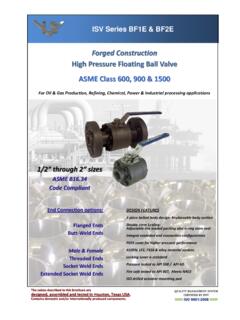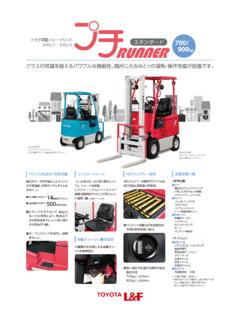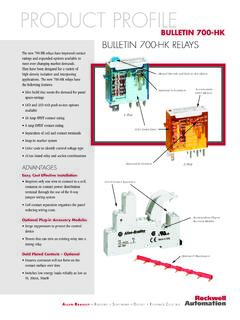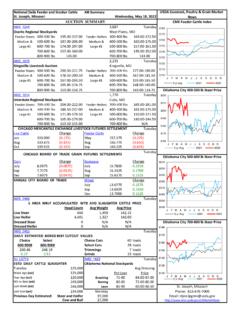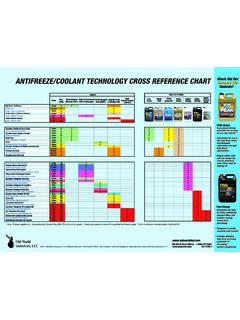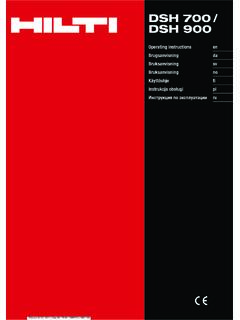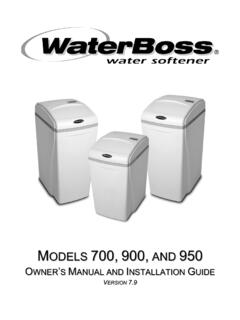Transcription of techNo - Bullseye Glass
1 HEAT & GLASSU nderstanding the effects of temperatUre Variations on Bullseye glasscrystalline strUct UreNot esa t e c h n i c a l s U p p l e m e n t f r o m BU l l s e y e g l a s s c o . 4techTHE UNIQUE NATURE OF Glass , THE SUPERCOOLED LIQUID Glass is an amorphous material. its molecules are not arranged in a regular, specific pattern, like those of a crystalline material, but are random in their configuration. Because of its amorphous molecular configuration, Glass reacts to heat differently than do other materials. Whereas metals heated to a specific temperature (a melting point) change from solid to liquid instantaneously, Glass goes through a very gradual transformation from a material that behaves like a solid to a material that behaves like a liquid. it is this unique characteristic of Glass that allows it to be blown or to be worked in the myriad ways we call kilnforming.
2 Even in its solid form, Glass exhibits the molecular structure of a stiff liquid. for this reason, Glass at room temperature is sometimes referred to as a supercooled liquid. as it is heated, Glass gradually begins to behave more and more like a liquid until, at temperatures above 2000 f (1093 c), it will flow easily, with a consistency similar to honey. the temperatures at which Glass is worked in a kiln are usually between 1000 1700 f (538 927 c). Within this range, a wide variety of effects may be achieved by using a variety of strUct UreaUgUst 2009 edition2cold starting Width1000 1250 f(538 677 c)What yoU seeWhat is happening physicallyKilnforming process1 layer3mm (1/8 )2 layers6mm (1/4 )3 layers9mm (3/8 )at upper end of range:1 layer:edges just begin to soften and & 3 layers: (same as above.)
3 Layers will not stick together unless held for a long is beginning to soften and act like a stiff liquid, but still maintains its original is transitioning from behaving like a solid to behaving like a liquid; also known as the transformation painting or enameling is done at these Glass will bend or slump if held at the upper end of soak in the 1150 1250 f (621 677 c) range is often employed to squeeze or minimize trapped air from between starting WidthBelow 1000 f(538 c)What yoU seeWhat is happening physicallyKilnforming process1 layer3mm (1/8 )2 layers6mm (1/4 )3 layers9mm (3/8 )1 layer:rigid, no visible changes, edges & 3 layers: same as expanding or contracting at a rate determined by its coefficient of to thermal shock below approximately 850 f (454 c).Upper end of this range is where annealing occurs, at the anneal soak temperature of 900 f (482 c).
4 BEHAVIOR OF Glass wHEN HEATE dthe following chart gives a broad overview of how Bullseye glasses act in different temperature ranges. all Bullseye glasses do not behave identically. some very slight variations can occur, depending on the viscosity of the individual Glass . furthermore, the specific kiln, set-up, and firing cycle used will have a direct impact on the results achieved at any given temperature. as a general rule, the temperature ranges for clear float Glass (window Glass ) will be slightly higher about 100 f (38 c) higher than those for Bullseye Glass , in relation to the effects starting Width1250 1350 f(677 732 c)What yoU seeWhat is happening physicallyKilnforming process1 layer3mm (1/8 )2 layers6mm (1/4 )3 layers9mm (3/8 )1 layer:edges of Glass slightly rounded, surface begins to look & 3 layers: (same as above.)
5 Layers appear to be sticking held at the top end of this range too long, crystals may grow: polishing, the removal of abrasions on the Glass surface, can be begins to sag fully at upper end of range. Glass surfaces will stick together, called sintering or low-tack starting Width1350 1400 f(732 760 c)What yoU seeWhat is happening physicallyKilnforming process1 layer3mm (1/8 )2 layers6mm (1/4 )3 layers9mm (3/8 )1 layer:starts to contract and bead up at & 3 layers: layers are stuck together, upper edges rounded; footprint of Glass remains tension is overcoming may stick together with edges rounded, called tack starting Width1400 1500 f(760 816 c)What yoU seeWhat is happening physicallyKilnforming process1 layer3mm (1/8 )2 layers6mm (1/4 )3 layers9mm (3/8 )1 layer:center of piece may become extremely thin as perimeter thickens and & 3 layers:layers fully fused at upper end of range.
6 Glass begins to move beyond original footprint unless constrained by dams or upper end of range, gravity begins to overtake surface tension. any air trapped between Glass and shelf or between layers will fuse or kilncarving (bas relief on fiber paper).cold starting Width1500 1600 f(816 871 c)What yoU seeWhat is physically happeningKilnforming process1 layer3mm (1/8 )2 layers6mm (1/4 )3 layers9mm (3/8 )1 layer:air trapped between the thin center of the Glass and the top surface of the shelf may rise up and form a & 3 layers:surface smooth and watery, bubbles within Glass or trapped between layers may rise to contained, Glass will flow freely until it reaches 6mm (1/4 ) continues to decrease, allowing Glass to flow under the force of gravity. Glass also becomes more reactive with materials with which it is in contact.
7 At the upper end of the range, Glass sticks more readily to shelf separators and mold materials, and compatibility characteristics may begin to fuse or kilncasting. at upper end of range, Glass is flowing sufficiently to fill smaller cracks in mold OF Glass wHEN HEATEd continued5cold starting Width1600 1700 f(871 927 c)What yoU seeWhat is happening physicallyKilnforming process1 layer3mm (1/8 )2 layers6mm (1/4 )3 layers9mm (3/8 )1 layer:Bubble will burst, leaving & 3 layers: Glass is flowing like molasses. if shelf not level, Glass may flow off edge. must be constrained by molds or dams. Bubbles rising from lower layers will pull lower Glass up to continues to decrease, and flow is is fluid enough to perform combing with wet metal starting Widthabove 1700 f(927 c)What yoU seeWhat is physically happeningKilnforming process1 layer3mm (1/8 )2 layers6mm (1/4 )3 layers9mm (3/8 )1 layer:crater fully & 3 layers: Boiling type of activity continues to with a plugged crucible/reservoir that is unplugged to allow the Glass to flow, once it is fully INITIAL HEAT room temp to 1000 f (538 c)Until Glass reaches a temperature of about 850 f (454 c), it can shatter (undergo thermal shock), if heated too quickly or unevenly.
8 Because the Glass is always cooler than the thermocouple during initial heat, we extend the initial heating range to 1000 f (538 c) to make sure the Glass is at least at 850 f (454 c) before moving to rapid heat. there are no negative consequences to heating too slowly, other than lost production efficiencies. therefore, at Bullseye , we are generally very conservative in our heating rate for first firings: ~400 f/hr (222 c/hr). the smaller the individual pieces making up the project, the faster the initial heating can be. 2. PRE-RAPId HEAT SOAK 1150 1250 f (621 677 c)this optional-but-useful stage in the cycle, in which the Glass is held at a specific temperature, is designed to even out the temperature within the Glass body before the rapid ascent to process temperature, to allow for a faster ascent, and to squeeze air from between layers or within any gaps in the interior RAPId HEAT 1000 f (538 c) to forming or process tempthe primary objective in this temperature range is to move as quickly as possible to the process temperature so as to avoid devitrification (growth of crystals on the Glass surface), but not to fire so rapidly as to cause bubbles to be trapped between layers.
9 4. PROcESS SOAK 1000 1700 f (538 927 c)this is the temperature range at which Glass can be formed by using various processes, such as slumping, tack fusing, full fusing, or kilncasting. the same effects or processes can be accomplished whether firing to a lower temperature for a longer time or to a higher temperature for a shorter time. this interplay between firing temperature and firing duration is the basis of heat work. in general, one has greater control with a longer process soak at a lower temperature, as long as this temperature is not within the devitrification range. at Bullseye , we soak for an average of 10 minutes at process temperature for most basic RAPId cOOL process temp to ~900 f (482 c) Glass should be brought down to the anneal-soak temperature as quickly as possible, once it has been formed, to avoid devitrification and save unnecessary cooling time.
10 GOALS OF A FIRING ScHEdULEU nderstanding the behavior of Glass within different temperature ranges allows you to create a firing schedule or series of steps that will properly heat and cool Glass in a kiln. Using a firing schedule, you can accomplish the two basic objectives of kilnforming, which are: t o bring the Glass body to a temperature where it can be formed in the manner or process selected. t o return the Glass to room temperature in a stable condition ( , free of unwanted internal stress).a firing schedule (sometimes called a firing cycle or firing profile) may be subdivided in various ways. at Bullseye , we generally break the firing schedule down into the following eight stages:however, Bullseye does not recommend opening the kiln widely to vent at these temperatures. opening to vent can set up a temperature differential within the Glass body that will necessitate increased time at a lower temperature to bring back temperature equilibrium.

